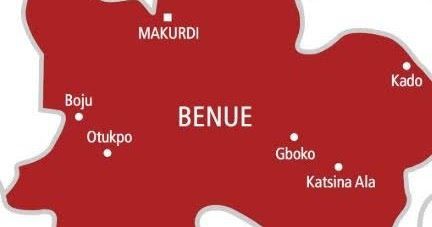In the recent outbreak of Lassa fever in Nigeria, 7 LGAs in Benue state have recorded 46 Lassa fever cases and nine deaths.
This was disclosed by The State Epidemiologist, Dr. Terungwa Ngishe on Thursday in the state capital, Makurdi.
According to Ngishe, the LGAs affected in the outbreak included Obi, Okpokwu, Gwer West, Makurdi, Guma, Gwer East, and Ukum.
He stated that the infection rate was higher than the figure from last year, assuring that sustained efforts were on to contain the outbreak, adding that some of the cases were recorded in an Internally Displaced Persons, IDPs, camp.
“So far as we speak, from the results gotten, Benue has 46 cases of Lassa fever. The cases are spread across seven LGAs, namely: Obi, Okpokwu, Gwer West, Makurdi, Guma, Gwer East, and Ukum.
“It is actually an increase compared to what we had last year. So far, we have nine deaths in confirmed cases as we speak. And we have been able to bury all the dead in accordance with safe burial protocols across the various areas of the state where they hail from,” he stated.
Speaking on the efforts of the government, Ngishe explained that the World banks and other relevant agencies are collaborating with the state to ensure that the fatality rate is reduced.
“And we have sustained response through the intervention of the Federal Government, World Bank, and the National Centre for Disease Control, NCDC. They have spoken loudly to enhance our surveillance efforts, risk communication (creating social behaviour change) in the communities; they have also spoken to the laboratory component of the response and coordination.
“Given the number of deaths we have recorded, we are hoping to reduce the numbers such that the key fatality rate for the state is less than 10 per cent; which is what the national expects from all of the state. For now, what we have is above that figure,” he said.
Also speaking on why the IDPs camp has recorded cases, Ngishe noted that poor sanitation, poor infection control, malnutrition, as well as high population of rats are reasons for the outbreak in the camp.
“We have reported cases in the IDP camps, precisely Ortese IDP camp. We also took several samples as well from the host community, but from the samples we have taken, we did not pick any other positive cases.
“However, there is active surveillance going on in the community in trying to ensure that if there is anybody at all that we missed during that particular period, the surveillance team will pick it and report the case immediately.
He said, “The IDP camp is a cluster setting with very poor infection control in terms of poor sanitation; it is a crowded environment, and they have issues of malnutrition.
“And from our report so far, the IDP camp has a high population of rats, so if the rats transmitting such are within the IDP camps, it means that we need to work extra hard to make sure that we do not have an outbreak that will be difficult to contain.
“We are doing all of these together with our partners to make sure that the state does not have a humanitarian disaster more than what it is already suffering.”










